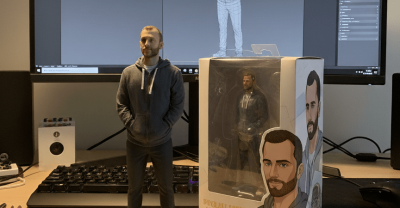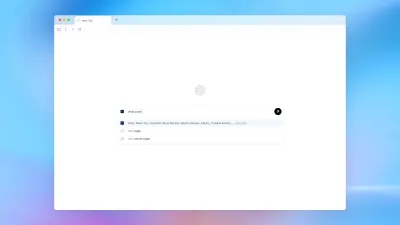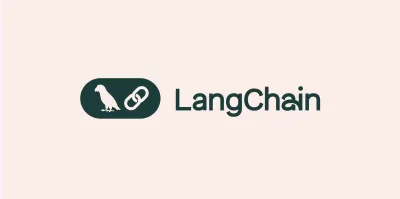Google Gemini's Nano Banana: The AI Image Editor Driving Viral Figurine Trends and Challenging ChatGPT's Dominance
By: @devadigax

Google's Gemini, once overshadowed by the ubiquitous ChatGPT, is rapidly gaining traction. A key driver of this surge in popularity appears to be Nano Banana, a relatively new AI-powered image editor launched in late August. The tool's ability to create hyperrealistic images, particularly its role in fueling the viral trend of AI-generated figurines, is propelling Gemini into the spotlight and challenging the established dominance of text-based AI models.
The success of Nano Banana is multifaceted. While specifics of its internal workings remain largely under wraps, its user-friendly interface and impressive results are widely praised. Early adopters quickly discovered its capacity to generate stunningly realistic images from relatively simple prompts, leading to a cascade of user-generated content flooding social media platforms. This organic virality is far more powerful than any traditional marketing campaign, effectively broadcasting Nano Banana's capabilities to a massive audience.
The most prominent application of Nano Banana, and arguably the primary reason for its explosion in popularity, is the creation of highly realistic figurines. Users are generating incredibly detailed and lifelike images, which are then being printed and sold, either as individual crafts or as part of burgeoning online marketplaces dedicated to AI-generated art. This bridges the gap between digital art and physical collectibles, tapping into a significant market eager for unique and personalized items. The figurines range from whimsical characters to realistic portraits, offering a wide spectrum of creative potential.
This trend isn't simply a fleeting fad. The demand for personalized, unique goods is consistently high, and AI tools like Nano Banana are democratizing the creation process. Previously, generating such high-quality images required specialized software and advanced artistic skills. Now, even individuals with limited experience can produce professional-looking results, making it far more accessible to a wider range of creators and businesses.
This success is a significant challenge to established players like OpenAI and its ChatGPT model. While ChatGPT has dominated the conversation around generative AI, largely focusing on text-based applications, Gemini's Nano Banana demonstrates the power of focusing on a niche yet highly popular area like image manipulation. It highlights the strategic advantage of specializing in a specific domain and capitalizing on emerging trends within that domain.
Moreover, the success of Nano Banana offers a compelling case study for the future of AI development. It suggests that the focus should not solely be on creating the most powerful, general-purpose AI models but also on designing user-friendly tools that are specifically tailored to meet particular needs. Nano Banana’s success underscores the importance of intuitive user interfaces, accessible features, and targeting specific, high-demand applications within the broader AI landscape.
The future of Nano Banana and its role within the wider Google Gemini ecosystem remains to be seen. However, its current trajectory suggests a significant impact on the AI image generation market. The rapid growth in users and the widespread adoption of its output in the creation of viral figurines indicate a significant shift in the way people interact with and utilize AI image generation tools. Google's strategic move to focus on this niche application has paid off handsomely, proving that a well-executed, user-friendly, and trend-driven approach can significantly disrupt even the most established players in the rapidly evolving field of artificial intelligence.
Further development of Nano Banana could lead to even more innovative applications. We might see integrations with 3D printing services, streamlining the process of creating physical figurines. Improvements in image quality, increased user customization options, and perhaps even the ability to generate animations could further enhance Nano Banana's appeal and solidifying its position as a leader in the AI image generation space. The current success is a testament to the potential of focused AI development and the power of viral trends in driving the adoption of new technologies.
The success of Nano Banana is multifaceted. While specifics of its internal workings remain largely under wraps, its user-friendly interface and impressive results are widely praised. Early adopters quickly discovered its capacity to generate stunningly realistic images from relatively simple prompts, leading to a cascade of user-generated content flooding social media platforms. This organic virality is far more powerful than any traditional marketing campaign, effectively broadcasting Nano Banana's capabilities to a massive audience.
The most prominent application of Nano Banana, and arguably the primary reason for its explosion in popularity, is the creation of highly realistic figurines. Users are generating incredibly detailed and lifelike images, which are then being printed and sold, either as individual crafts or as part of burgeoning online marketplaces dedicated to AI-generated art. This bridges the gap between digital art and physical collectibles, tapping into a significant market eager for unique and personalized items. The figurines range from whimsical characters to realistic portraits, offering a wide spectrum of creative potential.
This trend isn't simply a fleeting fad. The demand for personalized, unique goods is consistently high, and AI tools like Nano Banana are democratizing the creation process. Previously, generating such high-quality images required specialized software and advanced artistic skills. Now, even individuals with limited experience can produce professional-looking results, making it far more accessible to a wider range of creators and businesses.
This success is a significant challenge to established players like OpenAI and its ChatGPT model. While ChatGPT has dominated the conversation around generative AI, largely focusing on text-based applications, Gemini's Nano Banana demonstrates the power of focusing on a niche yet highly popular area like image manipulation. It highlights the strategic advantage of specializing in a specific domain and capitalizing on emerging trends within that domain.
Moreover, the success of Nano Banana offers a compelling case study for the future of AI development. It suggests that the focus should not solely be on creating the most powerful, general-purpose AI models but also on designing user-friendly tools that are specifically tailored to meet particular needs. Nano Banana’s success underscores the importance of intuitive user interfaces, accessible features, and targeting specific, high-demand applications within the broader AI landscape.
The future of Nano Banana and its role within the wider Google Gemini ecosystem remains to be seen. However, its current trajectory suggests a significant impact on the AI image generation market. The rapid growth in users and the widespread adoption of its output in the creation of viral figurines indicate a significant shift in the way people interact with and utilize AI image generation tools. Google's strategic move to focus on this niche application has paid off handsomely, proving that a well-executed, user-friendly, and trend-driven approach can significantly disrupt even the most established players in the rapidly evolving field of artificial intelligence.
Further development of Nano Banana could lead to even more innovative applications. We might see integrations with 3D printing services, streamlining the process of creating physical figurines. Improvements in image quality, increased user customization options, and perhaps even the ability to generate animations could further enhance Nano Banana's appeal and solidifying its position as a leader in the AI image generation space. The current success is a testament to the potential of focused AI development and the power of viral trends in driving the adoption of new technologies.
Comments
Related News

OpenAI Unveils ChatGPT Atlas: Your Browser Just Became Your Smartest AI Assistant
In a move poised to fundamentally reshape how we interact with the internet, OpenAI has officially launched ChatGPT Atlas, a gr...
@devadigax | 22 Oct 2025
In a move poised to fundamentally reshape how we interact with the internet, OpenAI has officially launched ChatGPT Atlas, a gr...
@devadigax | 22 Oct 2025

Netflix Doubles Down on Generative AI, Challenging Hollywood's Divide Over Creative Futures
In a move that underscores a growing chasm within the entertainment industry, streaming giant Netflix is reportedly going "all ...
@devadigax | 21 Oct 2025
In a move that underscores a growing chasm within the entertainment industry, streaming giant Netflix is reportedly going "all ...
@devadigax | 21 Oct 2025

AI Agent Pioneer LangChain Achieves Unicorn Status with $1.25 Billion Valuation
LangChain, the innovative open-source framework at the forefront of building AI agents, has officially joined the exclusive clu...
@devadigax | 21 Oct 2025
LangChain, the innovative open-source framework at the forefront of building AI agents, has officially joined the exclusive clu...
@devadigax | 21 Oct 2025

Meta Boots ChatGPT From WhatsApp: A Strategic Play for AI Dominance and Walled Gardens
In a significant move that reshapes the landscape of AI chatbot accessibility, OpenAI has officially confirmed that its popular...
@devadigax | 21 Oct 2025
In a significant move that reshapes the landscape of AI chatbot accessibility, OpenAI has officially confirmed that its popular...
@devadigax | 21 Oct 2025

Meta's New AI Peeks Into Your Camera Roll: The 'Shareworthy' Feature Raises Privacy Eyebrows
Meta, the parent company of Facebook, has rolled out a new, somewhat controversial artificial intelligence feature to its users...
@devadigax | 18 Oct 2025
Meta, the parent company of Facebook, has rolled out a new, somewhat controversial artificial intelligence feature to its users...
@devadigax | 18 Oct 2025
 AI Tool Buzz
AI Tool Buzz